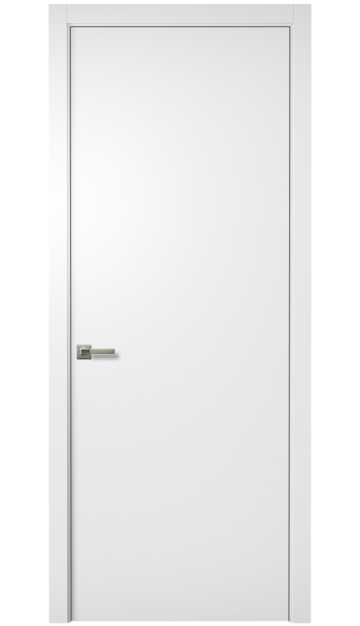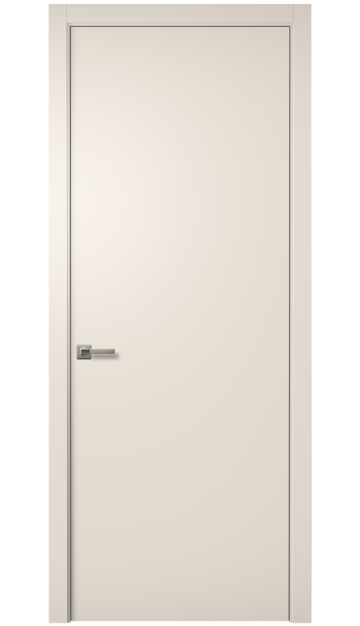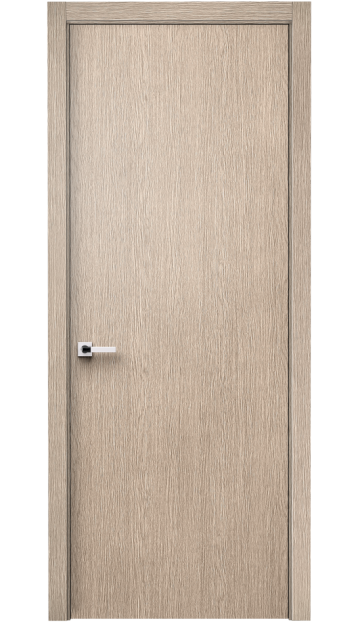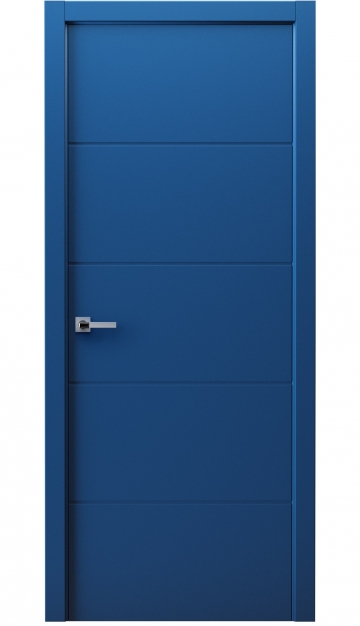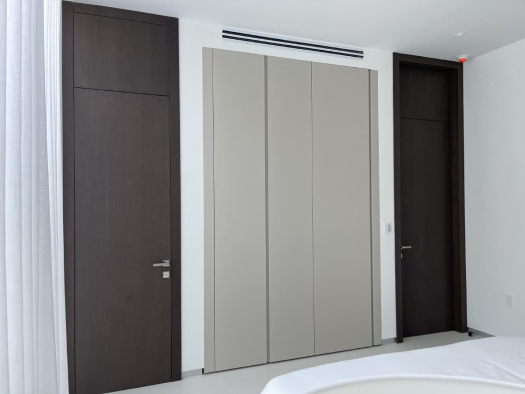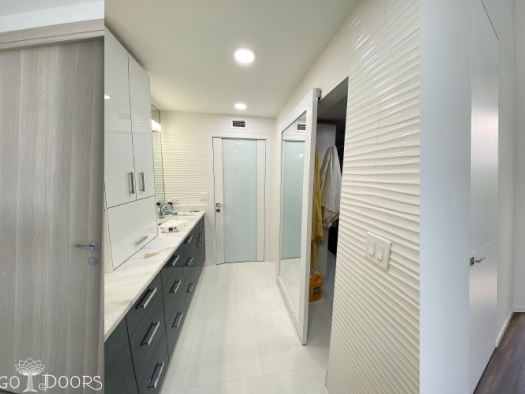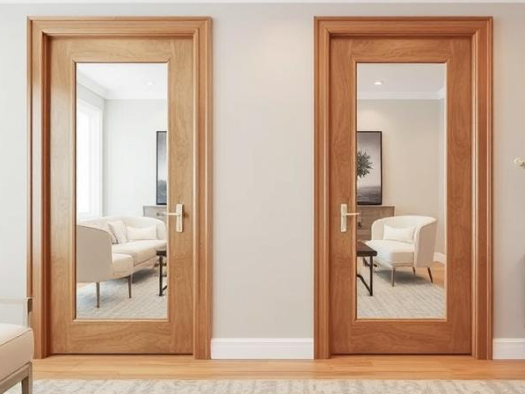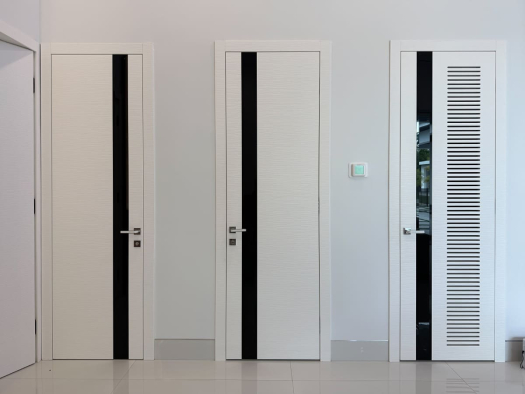- A Fresh Look for Your Home: Why Paint Interior Doors?
- What Paint Should You Use for Interior Doors?
- Preparing the Door: The Key to a Smooth Finish
- Best Tools for Painting Interior Doors
- How to Paint Without Brush Marks: Step-by-Step
- Interior Door Color Ideas and Trends
- Indigo Doors Tip: Don’t Want to Paint? Shop Pre-Finished Doors Instead
- Final Thoughts: Give Your Doors a Professional Touch
A Fresh Look for Your Home: Why Paint Interior Doors?
Painting interior doors is one of the simplest yet most impactful ways to refresh the look of your home without committing to a full renovation. Whether you're upgrading a dated design, hiding scuff marks, or adding a bold accent to your space, a well-painted door can dramatically enhance any room. With the right paint, tools, and technique, even old or plain doors can look like premium modern interior doors.
But homeowners often run into a common challenge: how to avoid unsightly brush marks and streaks. The good news? You don't have to be a professional painter to get a flawless finish. This guide will help you understand what type of paint is best for interior doors, how to properly prepare your doors for painting, and the step-by-step technique to achieve smooth, clean, professional results.

What Paint Should You Use for Interior Doors?
Choosing the right type of paint is crucial if you want durability and a clean, even finish. Here's what to consider:
1. Paint Sheen Matters
The most commonly recommended sheens for interior doors are:
- Semi-gloss – Most popular choice due to its durability and ease of cleaning.
- Gloss – Offers a high-shine, polished look perfect for modern or elegant interiors.
- Satin – A softer finish, suitable for low-traffic areas.
Avoid flat or matte finishes—they can absorb dirt and are harder to clean, especially in high-touch areas like kitchen or bathroom doors.
2. Oil-Based vs Water-Based Paint
- Water-based (Acrylic/Latex) – Dries faster, low odor, and is environmentally friendly. It's great for most residential uses.
- Oil-based – Provides a smoother finish and better durability, but takes longer to dry and requires more ventilation.
Pro tip: Many modern water-based paints now mimic the smooth finish of oil-based ones but are easier to work with—perfect for DIYers.
3. Use Paint Designed for Trim and Doors
Some paint manufacturers offer formulas specifically for trim and doors. These are thicker and self-leveling, which helps reduce brush marks automatically.
Preparing the Door: The Key to a Smooth Finish
Proper preparation is just as important as the painting process itself. Skipping steps will almost always result in streaks, unevenness, or peeling later on.
Step 1: Remove or Mask Hardware
Take off the door handles, locks, hinges (if possible), or cover them carefully with painter’s tape to avoid mess.
Step 2: Clean the Surface
Use a mild degreaser or dish soap to remove grime, oils, and dust. A clean surface ensures the paint adheres properly.
Step 3: Sand the Door
Use fine-grit sandpaper (120–220 grit) to lightly sand the door. This smooths out imperfections and gives the paint something to “grab onto.” For previously painted doors, remove any peeling paint or glossy finishes.
Step 4: Fill in Dents or Cracks
Use a wood filler to repair chips or scratches. Let it dry completely, then sand smooth again.
Step 5: Apply Primer (If Needed)
Priming is essential for:
- Bare wood doors
- Doors with dark stains or bold colors
- Previously oil-painted surfaces when switching to latex
Use a high-quality bonding primer to help the paint last longer and prevent blotchiness.
Best Tools for Painting Interior Doors
Brush marks usually come from using the wrong tools or poor technique. Here's what works best:
- High-quality angled brush – For panel edges and detailed areas.
- Foam roller – Helps create a smooth, streak-free finish on flat surfaces.
- Paint sprayer – Ideal for flawless results but requires more prep and protection from overspray.
Don’t skimp on the tools—better brushes and rollers will hold more paint and release it more evenly, reducing lines and streaks.
How to Paint Without Brush Marks: Step-by-Step
Now that your door is clean and ready, here’s the method professional painters use:
Step 1: Start with Panels (if any)
Use an angled brush to paint any recessed panels first. Then feather the edges outward to blend with the surrounding surface.
Step 2: Roll the Flat Areas
Use a foam roller to apply paint on the flat parts of the door. Work in sections—top to bottom—and keep a wet edge to prevent lap marks.
Step 3: Feather and Level
After rolling, lightly go over the area with the dry roller (no extra paint) to smooth out any bubbles or texture.
Step 4: Let It Dry and Apply a Second Coat
Always allow the first coat to dry completely before applying the second. Rushing this step often results in tacky finishes or peeling later on.
Step 5: Reinstall Hardware
Once everything is dry (typically 24 hours for full cure), reinstall your door handles, locks, and hinges.
Interior Door Color Ideas and Trends
Painting your interior doors gives you an opportunity to add personality to your space. Some trending interior door color ideas in 2025 include:
- Black or charcoal – For contrast in white or neutral rooms.
- Sage green or dusty blue – Adds calm, modern character.
- Bold colors like terracotta or navy – Great for contemporary or eclectic spaces.
- Classic white – Still timeless and works with any style.
Match your door color with nearby trim or contrast it for visual interest. You can also coordinate with your door hardware for a more polished finish.
Indigo Doors Tip: Don’t Want to Paint? Shop Pre-Finished Doors Instead
Painting is rewarding, but not everyone has the time or setup to do it right. At Indigo Doors, we offer modern interior doors, frameless designs, classic panel doors, and Royal Collection models that are pre-finished in a variety of premium colors and textures.
Whether you're in Florida or anywhere across the USA, we provide fast shipping, custom options, and hardware bundles to make upgrading your home easier than ever.
Final Thoughts: Give Your Doors a Professional Touch
Painting interior doors is a cost-effective way to give your home a designer look. With the right prep, tools, and techniques, you can transform any door into a statement piece. Always choose quality paints and apply carefully to avoid brush marks.
But if you're ready for a more lasting and elegant solution, explore Indigo Doors’ exclusive door collections—crafted with high-quality finishes and engineered for modern living.

